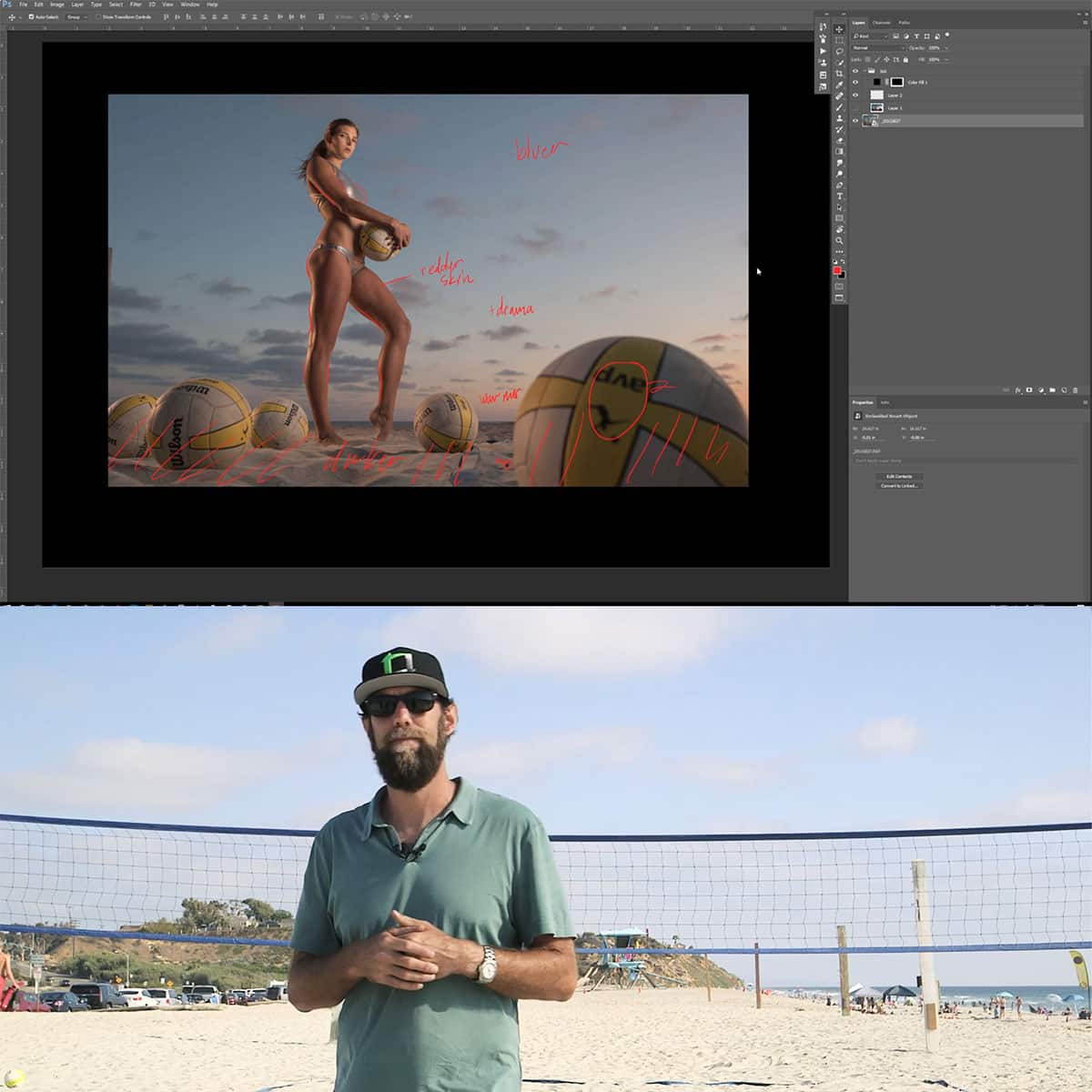Focus Peaking: A Revolutionary Tool for Sharp Images Unveiled
Focus peaking is a revolutionary tool in the world of photography that has transformed the way we achieve sharp images. It is a real-time focus mode that highlights peak contrast areas with a false-color overlay in the camera's viewfinder, allowing users to see what part of the image is in focus before they shoot.
This innovative feature is particularly useful for those who rely on manual focusing, as it quickly and easily shows a false-color overlay on the in-focus areas of an image. Focus peaking is available in a wide range of cameras, from still photography to videography equipment, and has become an indispensable tool for photographers and filmmakers alike.
Key Takeaways
- Focus peaking is a real-time focus mode that highlights in-focus areas of an image.
- This revolutionary tool is vital for achieving sharper images, especially when using manual focusing.
- Focus peaking is available in various camera brands and is applicable in both photography and videography.
Understanding Focus Peaking
Focus peaking is a revolutionary tool that helps photographers achieve sharp images when using manual focus. It is an algorithm utilized by some cameras to assist with nailing the plane of focus. This technique uses the camera's live view to highlight areas with peak contrast.
The process begins by identifying high-contrast edges within the frame, which usually indicate in-focus areas. To make it easy for the photographer to recognize the focused parts of the image, a false-color overlay is applied. This colorful contrast acts as a guide while adjusting the focus.
When shooting with manual focus, we often have difficulty determining the exact plane of focus. Focus peaking comes in handy by providing real-time feedback on what portions are in focus. This tool ensures that we can position the focus accurately, thus improving the overall sharpness of the image.
With focus peaking, we no longer need to guess where the plane of focus is, as the colored overlay shows us which parts are the sharpest. This precise focusing tool proves beneficial for capturing high-quality images, especially in situations where autofocus may struggle or is unavailable.
In summary, focus peaking enhances our manual focusing experience by offering real-time, accurate feedback on the plane of focus. With the false-color overlay, finding the sharpest areas becomes a breeze, allowing us to capture stunning images that stand out.
Focus Peaking in Photography
Focus peaking is a powerful tool for photographers that helps ensure sharp images while using manual lenses on DSLR or mirrorless cameras. It highlights the edges and textures of objects where focus is the sharpest, making it easier to achieve the desired depth of field. This feature is particularly useful in live view or when using the viewfinder.
Using focus peaking is beneficial for various genres of photography such as macro, landscape, portrait, and product photography. In macro photography, where shallow depth of field is common, focus peaking helps to identify the sharpest areas of the subject with ease. For landscape photography, it can be instrumental in pinpointing the ideal focus point to capture stunning landscapes bursting with detail.
Similarly, in portrait photography, using focus peaking ensures that the subject's eyes or any other important feature are in perfect focus. It is also a valuable tool in product photography where precise control over depth of field is essential to showcase the product's details effectively.
To use focus peaking, simply enable it in your camera settings, and while adjusting the focusing ring, you'll see a colored overlay highlighting the sharpest parts of your frame. This overlay color can usually be customized to complement your scene, ensuring it remains visible and does not blend with the background.
In conclusion, focus peaking is a revolutionary tool that enables photographers to capture sharp images across various photography genres, from flowers to landscapes. By utilizing this feature, we can confidently create more impressive and engaging photos with the desired depth of field.
Camera Brands With Focus Peaking
Nikon entered the focus peaking game with its DSLR and mirrorless cameras, making manual focusing easy and fast for photographers. The feature can be found in their recent models such as the Nikon Z series.
Sony has been widely praised for its focus peaking implementation. Most Sony mirrorless cameras like the Sony A7 series have the feature available in the menu by selecting the gear icon followed by section 2.
Canon also provides focus peaking on cameras such as the EOS R, EOS R5, and EOS R6. To access the feature, navigate to AF Menu 2 and look for MF peaking and Focus Guide options.
Fujifilm mirrorless cameras, like the X-T series, come with focus peaking too. Their system offers customization options such as peaking color and intensity, which can be adjusted in the camera settings.
Panasonic includes focus peaking in their flagship cameras such as the Lumix GH5 and S series. The feature is accessible in the camera menu, allowing users to select different peaking colors and levels for better focus management.
Pentax cameras, such as the K-1, also have focus peaking. Photographers can easily switch between auto and manual focus, utilizing the feature to obtain sharp, in-focus images.
Leica offers focus peaking in several of their rangefinder and mirrorless cameras, making the iconic brand's cameras even more appealing for precise focusing in various situations.
Olympus has focus peaking integrated into their OM-D line, providing the feature to photographers who prefer the compact Micro Four Thirds system.
In conclusion, focus peaking can be found in a variety of camera brands, making manual focus more accessible and precise for photographers across different systems.
Focus Peaking in Videography
Focus peaking is a vital feature in videography that helps videographers achieve sharp and clear images. This revolutionary tool is available in many modern video cameras and external monitors. It works by detecting high-contrast edges, indicating the area that is most in focus within the live view display.
We have found that focus peaking is particularly helpful when using manual focus in videography, as it ensures that subjects are in focus even in challenging conditions. It is ideal for capturing dynamic moments, where the subject may be moving or the focus plane is changing rapidly.
Benefits of Focus Peaking:
- Greater control over focus, especially when dealing with shallow depth of field
- Faster focusing by providing a visual guide for sharpness
- Increased consistency in achieving sharp results, even in challenging shooting scenarios
Despite its advantages, focus peaking should not solely be relied upon. We recommend utilizing other focus aids, such as magnification and zebras, for a comprehensive videography toolset.
In summary, focus peaking is an indispensable tool for videographers, aiding in delivering consistently sharp video content. By combining this powerful feature with other focus aids, we can ensure the highest quality footage for our projects.
Advanced Focus Peaking Techniques
When capturing images with shallow depths of field, focus peaking becomes an essential tool for achieving sharp results. We can enhance this manual focusing technique by adjusting the sensitivity of our camera's focus assist function depth of field. This allows us to better identify the in-focus areas of our scene.
Peaking highlights, or the false-color overlay, can be customized for your preferred color and intensity within the camera menu. This makes it easier for us to distinguish between sharp and soft details, especially in high contrast or low-light conditions.
To fine-tune the focus, we can use additional tools like split image and magnify, which work alongside focus peaking to get even greater precision. These tools allow us to evaluate the sharpness of our subject in real-time. Consider adjusting the ISO and exposure settings, as they may affect the effectiveness of peaking highlights.
When shooting with a wide aperture, focus peaking can be particularly helpful. For instance, if our camera's autofocus is struggling to find the right point, we can switch to manual focusing and use this technique to ensure we get a sharp image. This becomes especially important when dealing with art that requires specific focusing points, like portrait photography.
Achieving perfect focus takes practice, but by incorporating these advanced focus peaking techniques and being mindful of our camera settings, we can elevate our photography skills and capture stunning, precise images.
Frequently Asked Questions
How does focus peaking improve image sharpness?
Focus peaking works on the principle that the sharpest areas of an image have high contrast. When using manual focus, it highlights the edges and textures of objects in the Live View display, allowing us to easily identify the in-focus areas. This real-time visual aid helps produce sharper images by ensuring accurate focus.
Which camera brands offer focus peaking features?
Many camera brands offer focus peaking features in their models, including popular brands like Sony, Canon, Nikon, Fujifilm, and Panasonic. Focus peaking has become increasingly common in modern cameras, especially in mirrorless cameras and DSLRs with live view capabilities.
What are the limitations of focus peaking?
Focus peaking can have limitations depending on the camera model and the scene being captured. It may sometimes struggle in low-contrast scenes, and extremely shallow depth of field situations can prove to be difficult as the differences in sharpness can be very subtle. Additionally, focus peaking might not be as effective in low light conditions, making it harder to identify in-focus areas.
Can focus peaking be used in both photography and videography?
Yes, focus peaking can be used in both photography and videography to assist in manual focus. It has been particularly popular among videographers, as it enables them to maintain focus on moving subjects and ensure crisp footage.
How does focus peaking compare to other focusing methods?
Compared to other focusing methods, focus peaking offers a more intuitive and real-time visual representation of the focus plane. While other methods rely on camera automation or the photographer's eyesight, focus peaking actively highlights sharp areas of the image in a simple and informative way. It can be especially useful in combination with other focusing tools like focus magnification and focus assist.
Are there any downsides to using focus peaking?
There are some potential downsides to using focus peaking. For instance, it can sometimes be less precise in situations with extremely shallow depth-of-field or low light conditions. Moreover, the feature might not be available in all camera models or may have limitations depending on the camera model and the scene. It is essential to learn and practice using focus peaking alongside other focusing methods to ensure the best results.


























